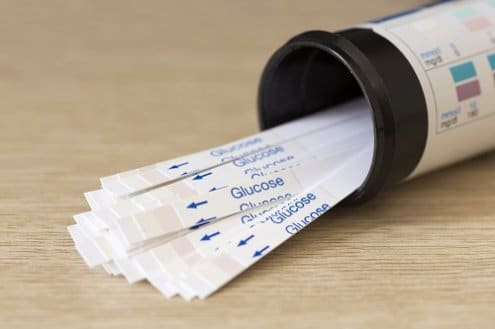What are diabetic blood glucose test strips?
Diabetic blood glucose tests strips or glucometer strips are small disposable plastic slips that allow people with diabetes to monitor their blood glucose levels. It is important for people with diabetes to test their blood glucose levels so that their doctors can know whether the treatment program is working or not. Diabetes blood glucose strips work by reacting with a chemical known as glucose oxidase. The diabetic test strip comes with electric terminals that allow a glucometer transfer a current and measure it between the terminals. A glucometer will use an algorithm to calculate your blood sugar levels based on the current that is measured.
A diabetic test strip consists of several layers with different functions. The top layer of the glucometer strip works as a sponge to absorb the blood sample. The middle layer acts as a filter. The layer after this works to react with the blood glucose, speeds up electrons for an accurate reading, and also stabilizes the enzymes and mediator chemicals. The last layer is a circuit that transfers the reaction to the meter.
How to use glucometer strips
For you to test your blood glucose levels using a glucometer strip, you must place a blood sample on the test strip. Ensure you wash your hands with warm water to help the blood flow, and do not use the same finger each time. Some people find the side of the finger less painful. You can draw the blood sample using a lancet, which can be found at most drugstores. Hold the strip to the finger to absorb the blood droplet. After placing the blood sample on the diabetes strip, the glucometer works to calculate your blood glucose levels. The results of your blood glucose levels will then be displayed on the screen. Ensure to dispose of the lancing device after it has been used. You can record the test result to analyze at a later time.
Disclaimer: Please note that the contents of this community article are strictly for informational purposes and should not be considered as medical advice. This article, and other community articles, are not written or reviewed for medical validity by Canadian Insulin or its staff. All views and opinions expressed by the contributing authors are not endorsed by Canadian Insulin. Always consult a medical professional for medical advice, diagnosis, and treatment.


